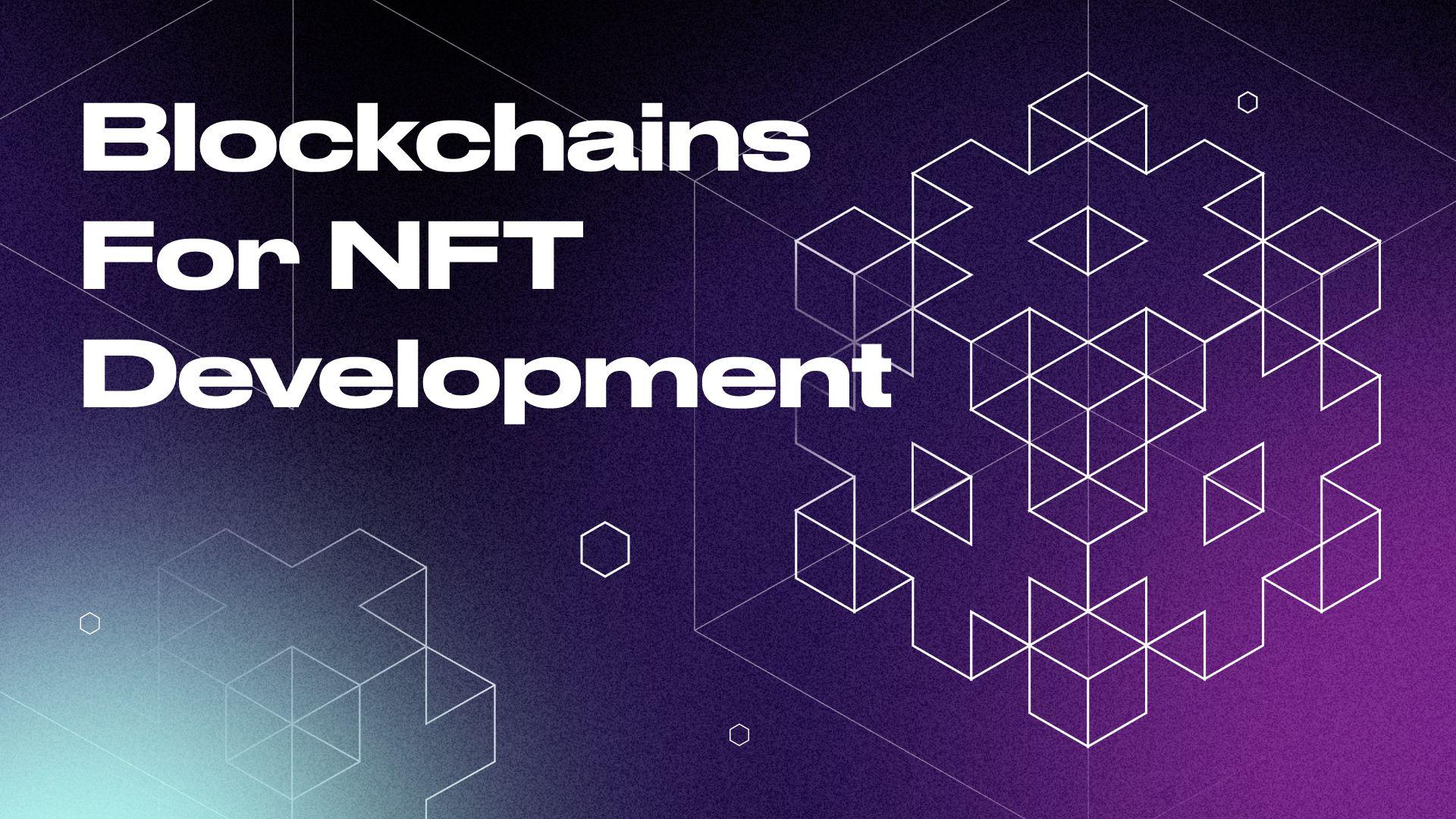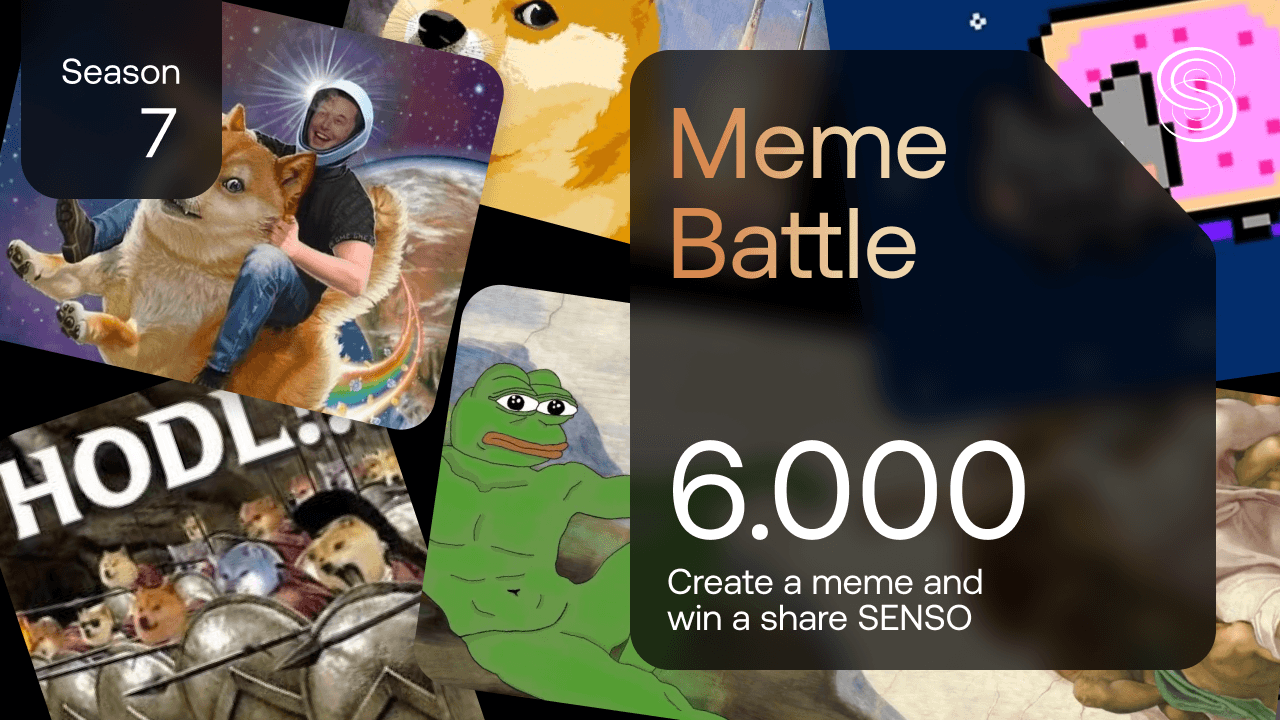A year ago, at the start of 2021, only a small group of people on the internet really knew what NFTs were. And while non-fungible tokens have been around since the mid-2010’s, it was the now infamous Christie’s auction of Beeple’s ‘Everydays: the First 5000 Days’ that really kicked the NFT craze off. By the end of last year, $41bn had been spent on NFTs and now the world is all over the media, social networks, talk shows and day to day conversations. Crypto investors and enthusiasts have been quick to rush to all things NFT, but you too might now be interested in developing your own NFTs or leveraging your business with non-fungible tokens. Before you do, it’s worth understanding the different blockchain standards available, how to best compare them in connection to your needs and the considerations to bear in mind so you can make the right choice.
What is a blockchain?
Let’s start from the beginning. A blockchain is a decentralized database that is managed by a network of peer-to-peer computers. As it is decentralized, there is no central authority mediating transactions or having oversight over the network. All transactions within a blockchain take place in blocks that are verified and validated by, as earlier mentioned, a network of computers. By using complex cryptography, each block comes with a data record of previous blocks (or transactions) and a timestamp. Given the architecture of a blockchain, it would be incredibly difficult for anyone to hack it and tamper with the information contained in the blocks. This makes blockchain technology a safe way of executing transactions without the need for an intermediary. Non-Fungible Tokens (NFTs) are tokens that are minted (created) on blockchains. Each NFT will have their unique identifier in the form of a code, which is associated with an address inside the chain. Using the blockchain’s system of tracking and securing information, NFTs can become a reliable form of recording of information like the creation, sale or re-sale of a digital item.
What should you know before choosing a blockchain for NFTs?
Thanks to blockchain technology, a wide variety of assets can be tokenized and the use cases are immense, from entertainment and logistics to ticketing and real estate. As such, not all blockchains will be suitable for the development of the NFTs you might have in mind. When searching for the best platform, there are several features to take into account:
Transaction speed
Ideally, you’ll be looking for a blockchain that can support a high number of transactions per second as this could prove to be a make or break element when it comes to the success of your NFT development project. If transactions take a long time to finalize, it creates a bottleneck. Users can choose to pay an extra fee to miners in order to have their transactions prioritized or risk waiting for long periods of time. This creates an opportunity for potential attackers to tamper with transactions, something you clearly won’t want to see happening.
Transaction costs
All transactions on a blockchain cost money. And, let’s be honest, most NFTs are unlikely to be sold for hundreds of thousands of dollars. If you’re looking to keep your costs under control when developing NFTs, it’s always smart to compare the fees charged to settle transactions in a blockchain.
Smart contract functionality
NFTs are implemented and executed using smart contracts which set the terms of an exchange between a buyer and a seller without the need for an intermediary. A reliable blockchain should have robust and fool-proof contracts as the opposite could lead to frauds and scams on the network. In order to prevent problems with the language of the contracts, which can lead to tokens being lost, a blockchain should have safeguards in place.
Security
Needless to say that an ultra-secure blockchain is the option you should be looking for unless you’re willing to risk losing your resources and data. What you’ll be looking for is a blockchain that relies on an alternative consensus mechanism like proof of stake versus proof of work as the latter is more prone to being the target of attacks.
Forking
The allure of NFTs are their uniqueness and rarity, and the last thing you ever want to imagine happening is the value of your non-fungible tokens going to zero. That’s something that can happen through hard forks which lead to NFT duplicates. The possibility of forking is then a major consideration to keep in mind and you’ll likely want to search for fork-proof solutions.
In addition to all the features mentioned, different blockchains will have their own marketplace integration and interoperability possibilities as well as the application possibilities their NFTs could have. This can be a significant factor when choosing NFT marketplaces, for example, and determining which blockchain meets your long-term needs.

Ethereum has so far won the race when it comes to crypto and NFTs, despite some stiff competition for other blockchains. As the original blockchains for NFT, it remains the most widely used blockchain for minting NFTs, no doubt thanks to how simple and easy it is to use. Another part of its appeal had to do with the number of top NFT marketplaces that leverage the Ethereum network like OpenSea, Rarible and Decentraland, all of which use the ERC721 standard. This Ethereum standard ranks among the most trustworthy when it comes to creating non-fungible tokens. However, it might not be the best network for those looking for cheaper gas fees. Ethereum has seen the cost of minting NFTs surging as demand in the Ethereum blockchain becomes heavier, which has also led to congestion and scalability complaints in the past, not to mention the controversies it has faced over its proof-of-work system which is a heavily energy-consuming option for minting NFTs and settling network transactions.
Binance Smart Chain

As mentioned Ethereum has faced multiple issues that have seen users turning to cheaper and even faster alternatives. Binance Smart Chain is a parallel blockchain platform to the Binance Chain network and it specializes in smart-contract-based applications and features compatibility with the Ethereum Virtual Machine (EVM), all while maintaining fast transaction speeds and charging low gas fees. Given its EVM-compatibility, this blockchain can support a whole range of Ethereum DApps and tools, opening up opportunities for both developers and users. The Binance Smart Chain supports token standards like the BEP2E token and the ERC-20 token (ETH) as well as its native cryptocurrency, the Binance Coin (BNB).
Polygon

Polygon is a Layer 2 blockchain that has become known for being one of the most reliable and affordable blockchains out there. The world’s largest NFT marketplace, OpenSea, has Polygon NFTs integrated into its platform and some of the most popular NFT-based games like Aavegotchi and Polychain Monsters, also use Polygon’s scaling technology to ensure more dynamic experiences. A feature that appeals to users is its ‘lazy minting’ functionality,, meaning that there are no upfront costs when creating NFTs. There is, however, a fee that is charged when an NFT is sold. Layer 2 blockchain networks are designed for efficiency and Polygon is no different, offering near-zero transaction fees and quick settlement times while also being a low energy option.
Solana

Despite being an up-and-coming blockchain, Solana has seen a massive surge in adoption, posing some serious competition to the likes of Ethereum and Cardano. And it’s clear why crypto and digital art enthusiasts have started their NFT minting on this chain. Solana has a solid reputation as a high-efficiency blockchain capable of processing 65,000 TPS while keeping fees at less than $0.01. Unlike any other blockchain, Solana combines proof-of-history (PoH) and proof-of-stake (PoS) consensus mechanisms, which helps secure quicker-than-average validation times for both transaction and smart contract execution. Another attractive functionality is scalability and that’s evident by the speed of growth of the Solana ecosystem that now encompasses, among others, some of the top NFT platforms like Solanart and Magic Eden. In addition, this blockchain is a low carbon alternative to other chains (the developer claims one Solana transaction consumes less energy than two Google searches). You might have also heard of Solana before because of its native cryptocurrency, SOL, whose value has also shot up as of recently.
Flow

Flow focuses specifically on supporting game and metaverse NFTs as well as assets like digital collectibles, leveraging the long experience of its developer, Dapper Labs, which has had tremendous success with projects like CryptoKittes, Dapper Wallet and, of course, the NBA Top Shot. Flow is a high-performance blockchain that has a number of integration and interoperability features that make it especially desirable for decentralized apps (Dapps), including NFT marketplaces. In addition, the Flow blockchain allows anyone to become a validator (also known as miner) for the blockchain without the need for any particular requirements like specialized equipment, meaning that joining Flow is a fairly easy process. Moreover, this blockchain uses the proof-of-stake algorithm which keeps costs low while ensuring that the platform is environment-friendly. Other characteristics that make it a cut above the rest include finality of transactions, upgradable smart contract features, human readable security and smart use account recovery options.
Cardano

Cardano is a distributed proof-of-stake blockchain, founded by Ethereum's co-founder Charles Hoskinson. The platform is focused on scalability and efficiency while enabling robust applications and settling transactions in its own native currency - ADA. Cardano was also developed to be an environment-friendly blockchain. One of its key advantages is being able to secure high performance at 65,000 transactions per second, making it one of the fastest blockchains available. As if that wasn’t impressive enough, its upcoming Layer 2 scaling protocol, called Hydra, could see that number being boosted up to 2 million TPS. The transaction costs on this blockchain are also fairly low when compared to the competition. Just like the Binance blockchain, it features Ethereum Virtual Machine compatibility to support Ethereum-based smart contracts and DApps.
Immutable X

Immutable X is another great Layer 2 blockchain that focuses on allowing NFTs to be developed in an open, decentralized ecosystem, secured by Ethereum. This allows anyone to create an NFT project without having to worry about congestion, scalability or slow developer experience. This blockchain also has a zero gas fees system for peer-to-peer transactions and relies on its native currency IMX (an ERC-20 utility token) for governance, staking and fee payment purposes. When it comes to transaction speeds, Immutable X currently supports 9,000 TPS.
Tezos

This emerging open-source blockchain is based on a liquid proof-of-stake algorithm, which Tezos claims is aimed at encouraging the collaboration and participation of its users who are responsible for overseeing the governance of the network and ensuring future upgradability features. Participation is done through holding the native cryptocurrency of this platform - Tez. It’s important to note that Tezos has three token standards, but only one of them, the FA2, is designed to mint NFTs. The blockchain is capable of facilitating as much as up to 40 TPS, for less than a penny per transaction. A number of marketplaces where users can easily mint, buy and sell NFT collections work on the Tezos blockchain, including Hicetnunc and Kalamint.
Wakatta

Wakatta is an NFT-focused blockchain developed by Sensorium DLT, with the purpose of catering to the needs of the entertainment industry. This blockchain was developed using the Substrate technology framework, the same that powers the Polkadot ecosystem, and has a number of attractive features like ultra-low network transaction fees set at an average of<$0.001 and the capability to support 1000+ TPS. Unlike other blockchains, Wakatta has brought to market a new range of pioneering NFTs that are upgradable, time-limited, and non-hashed. NFT developers can also benefit from Ethereum Virtual Machine compatibility, on-chain NFT auctions, multi-role assignments for Dapps, customizable onboarding mechanics for digital environments, algorithmic incentives for validators, among many others. The architecture of this blockchain is specifically designed for NFT businesses and creators, offering easy and convenient solutions for those who aren’t non-crypto savvy and want to integrate non-fungible tokens into their infrastructures and take advantage of robust and NFTs minted through Wakatta’s proprietary platform. On top of all these features, as a nominated Proof-of-Stake blockchain, Wakatta is also 99% greener when compared to energy-intensive networks like Ethereum.




